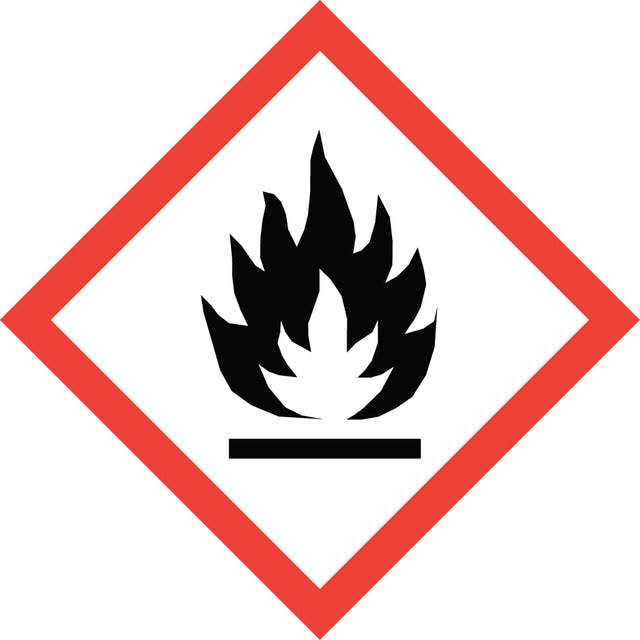蒸汽密度
3.5 (vs air)
质量水平
蒸汽压
120 mmHg ( 20 °C)
产品线
ReagentPlus®
方案
99%
表单
liquid
自燃温度
827 °F
expl. lim.
1-21 %, 100 °F
dilution
(for general lab use)
折射率
n20/D 1.367 (lit.)
沸点
68-69 °C (lit.)
mp
−85 °C (lit.)
密度
0.725 g/mL at 25 °C (lit.)
SMILES字符串
CC(C)OC(C)C
InChI
1S/C6H14O/c1-5(2)7-6(3)4/h5-6H,1-4H3
InChI key
ZAFNJMIOTHYJRJ-UHFFFAOYSA-N
正在寻找类似产品? 访问 产品对比指南
一般描述
Diisopropyl ether is a colorless liquid. It is widely used as a solvent for the isolation of fats and oils. It can be synthesized from isopropyl alcohol. Its mixture with isooctane has been added to the gasoline fuel as an antiknocking agent. Its synthesis from propylene and water in a single-pass trickle-bed reactor in the presence of an ion-exchange resin catalyst Amberlyst 15 has been proposed. Its efficacy as a fuel additive has been reported. When released in the atmosphere, it undergoes photodecomposition by reacting with OH radicals. Kinetics and mechanism of its reaction in atmosphere have been reported.
应用
Diisopropyl ether may be employed as a solvent for the preparation of aliphatic and aromatic cyanohydrins.
法律信息
ReagentPlus is a registered trademark of Merck KGaA, Darmstadt, Germany
警示用语:
Danger
危险声明
危险分类
Flam. Liq. 2 - STOT SE 3
靶器官
Central nervous system
补充剂危害
储存分类代码
3 - Flammable liquids
WGK
WGK 1
闪点(°F)
-20.2 °F - closed cup
闪点(°C)
-29 °C - closed cup
法规信息
危险化学品
此项目有
Atmospheric chemistry of automotive fuel additives: diisopropyl ether.
Wallington TJ, et al.
Environmental Science & Technology, 27(1), 98-104 (1993)
Single stage synthesis of diisopropyl ether-an alternative octane enhancer for lead-free petrol.
Heese FP, et al.
Catalysis Today, 49(1), 327-335 (1999)
Eagleson M.
Concise Encyclopedia Chemistry, 325-325 (1994)
Novel (R)-oxynitrilase sources for the synthesis of (R)-cyanohydrins in diisopropyl ether.
Kiljunen E and Kanerva LT.
Tetrahedron Asymmetry, 8(8), 1225-1234 (1997)
I Linhart et al.
Toxicology and applied pharmacology, 136(1), 155-160 (1996-01-01)
Biotransformation of acrolein (ACR) was studied in vivo in the rat following inhalation and ip administration. The major and minor urinary metabolites were 3-hydroxypropylmercapturic acid (HPMA) and 2-carboxyethylmercapturic acid (CEMA), respectively. Male Wistar rats were exposed to ACR, 23, 42
我们的科学家团队拥有各种研究领域经验,包括生命科学、材料科学、化学合成、色谱、分析及许多其他领域.
联系客户支持
